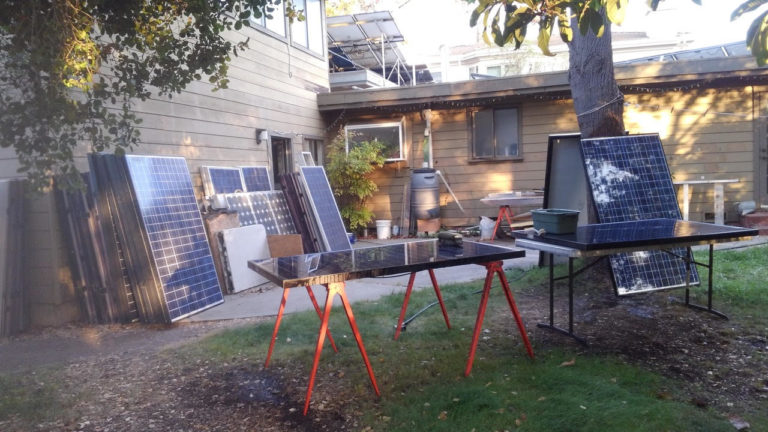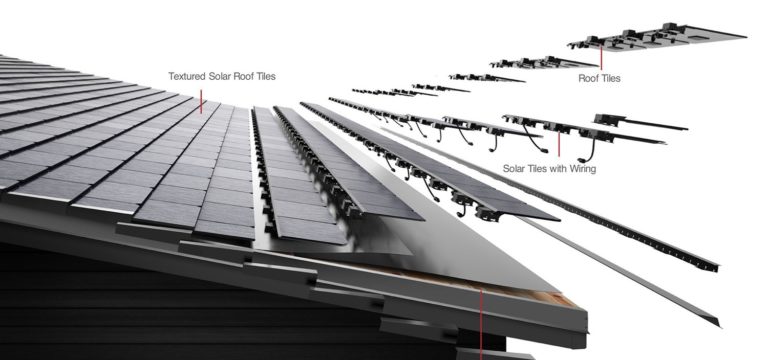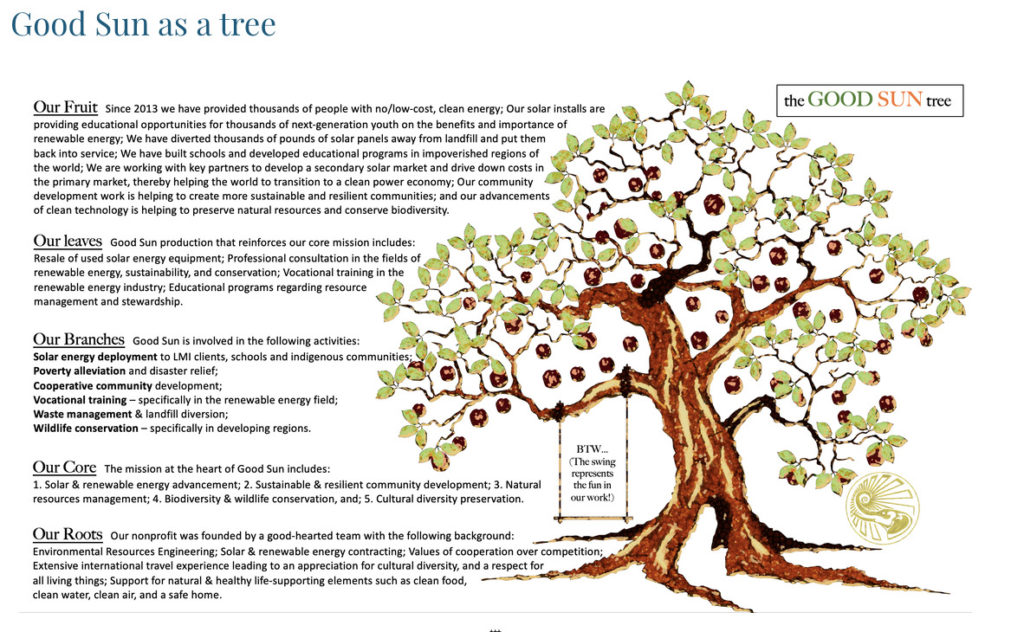A Happy Tale of Solar Reuse

& a Snazzy Solar Roof (w/drones)
It started, as most things do, over a beer. And copious appetizers provided by wonderfully determined hosts. Al fresco dining near the barbecue, with reasonable social distance.
Conversation with my wife’s friend’s husband (we’ll call him Abe) turns to his latest project, redoing his roof. The good news: the new roof will be a fancy Tesla solar install, 9.66 kWs with a couple of Powerwalls. The not-so good news: what to do with the existing 3.9 kWs of panels on the current roof. A puzzler. To their evil org shame, the Tesla people care not a wit about the panels, and have no suggestions, save contributing to the landfill. There has to be a better way.
Enter Tom Kabat, a certified go-to person for renewable energy puzzlers. You might remember Tom from Sustain-a-Palooza! (a Gridizen’s Guide to Home Comfort), countless demonstrations, events and the invention the world-famous SSV Carbon Burger. Tom puts me on to David Coale, a DC Consultant and veteran solar installer who contacted Good Sun, a Grass Valley nonprofit focused on stamping out solar waste and promoting equity. I love beneficial networks!
David contacts Abe, arranges to pick up the panels, cleans and sorts them and trucks them to Good Sun. Abe gets a tax credit, which will defray a small portion of his new, early adopter roof. How much? Don’t ask….
But back to Good Sun. A 501c3 founded by solar professionals who initially focused on doing work abroad, mostly Africa. A couple of rewarding projects from that period can be found here. While small in size, the knowledge gained as a group propelled the nonprofit in many different directions with many new ideas. In 2017, Good Sun focused on a “repower” project with members of local schools and government agencies in Nevada County, collectively called the ‘Local Power’ group, which won a Department of Energy grant for participating in the Solar In Your Community Challenge. In response to the Challenge, Good Sun and the Local Power Group conceptualized the Re-Power program, which was able to install solar systems for three local schools using repurposed material, saving them about $18,000 annually.
Used solar equipment that otherwise would have gone to the landfill became a new journey of ideas and brought Good Sun to where they are today, partnering with a large solar panel manufacturer to conceptualize a reuse program with slightly used equipment, oversee the installation and donate all repurposed material for a local homeless shelter’s 18kW PV system, and work with their newest partner, Habitat For Humanity, furnishing them with new panels for their new low income houses.
Even though the pandemic, Good Sun was able to sustain the nonprofit and keep some project commitments moving forward. While equipment donations were not great, they were able to receive enough used equipment and resell them through their “Solar ReStore.”
The reuse concept works well for many reasons. First, it keeps many used still working solar panels out of the landfills. Secondly, it can bridge that gap between used surplus solar panels and underserved communities. Lastly, the ecological crisis we face necessitates the need to transition to a sustainable way of life through clean renewable energy.
Good Sun works to increase solar access to low-income communities, thereby raising the standard of living and promoting the recycling / repurposing adoption of solar technology.
Many homeowners and commercial businesses are looking to renew their solar systems either because they need a new roof, or people need more power and find it easier to donate their used still functioning equipment to a nonprofit charity like Good Sun and receive a charitable contribution receipt.
Built Environment People: be sure to keep Good Sun in mind!
Meanwhile, the homeowner we call Abe exchanged his 19 panel Solar City 3.9 kW system installed in late 2009 and added-on first-generation (pre-Powerwall) Tesla battery backup for a state of the art Tesla 9.66kW roof with 161 solar tiles and 2 Powerwalls. He is happy with the switch and thinks the new roof looks great.
The entire project took about two weeks: three days to tear off the original roof, and about a week and a half to install the new one.
And we did promise drones. See the video below for the flyover.

